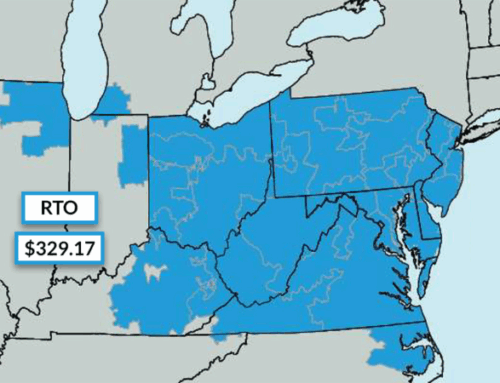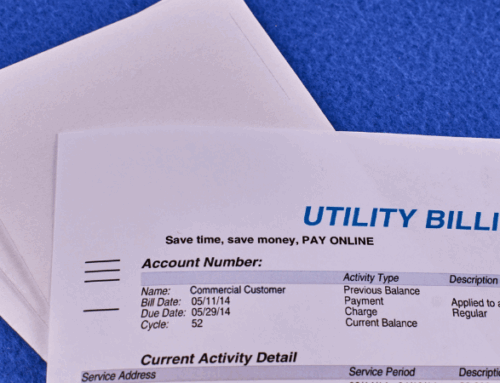Because of the recent spike in capacity prices in PJM, finding ways to reduce capacity tags for your facility is more important than ever. The growing demand from data centers on PJM drove capacity rates to increase by up to 900% in some regions. Developing an effective strategy for managing capacity tags will have a direct impact on your bottom line. This article will outline some practical ways to reduce capacity tags during the summer to combat rising prices and reduce your energy expenses.
What Are Capacity Tags And Why Is PJM Increasing Rates?
Capacity tags are how businesses are charged for electricity capacity in the PJM wholesale market. These tags are based on a facility’s electricity usage during the grid’s highest peak hours, known as coincident peak (CP) events. PJM typically identifies the five peak demand hours during the summer, and a building’s average peak demand during those hours becomes its capacity tag for the following year. This tag directly determines your share of the region’s total capacity costs.
For large commercial and industrial energy users, capacity charges can account for 20% to 30% of the total electric supply bill, meaning that even a few hours of high usage during peak summer hours can lock in a significant cost increase for the entire following year. Reducing your power load during these critical periods is one of the most effective ways to control long-term energy expenses.
PJM’s capacity rates are rising sharply for the 2025/2026 delivery year, due to its latest capacity auction where PJM posted a clearing price nearly five times higher than the previous year’s. This spike was driven by several factors, including generation retirements, tightening reserve margins, and a significant increase in consumer demand. These trends have pushed capacity prices to decade-high levels, making tag reduction more urgent than ever for energy users.
Why Reducing Capacity Tags Matters Now More Than Ever
Capacity accounts for approximately 30% of your total commercial electricity bill. The average ratepayer in PJM will go from paying approximately $0.004/kWh for capacity to close to $0.02/kWh. This 5x rate increase has the potential to increase electricity bills significantly if not managed properly. In order to properly manage your capacity tags, you must first understand how the capacity billing calendar works:
- June 1 – August 31, 2024: PJM measures your facility’s demand during the 5 peak hours of the summer.
- July 2024: PJM holds capacity auction for the June 2025 – May 2026 capacity delivery year.
- September 2024: Your capacity tag is calculated as an average of your demand on the 5 peak hours.
- June 2025 – May 2026: Your electricity bills reflect your capacity tag (e.g. 500 kWh) multiplied by the daily capacity rate.
With capacity rates currently surging, now is the time for businesses to take action. Let’s explore five proven strategies to reduce your capacity tags and offset these rising costs.
5 Actionable Strategies To Reduce Capacity Tags
Here are five practical strategies commercial and industrial energy users can implement to lower their capacity tags and combat PJM’s rising capacity charges.
1. Implement Peak Load Management and Demand Forecasting
Monitoring PJM’s grid alerts for peak hours is an effective way to ensure lower demand readings during peak events that determine capacity tags. There are several services, including some from Diversegy, that can alert you 24 hours in advance of a potential peak event. Finding ways to lower your energy demand during these hours, such as load shifting or load shaving, will help you to reduce your tag for the following year’s capacity billing period.
2. Utilize Real-Time Energy Monitoring and Building Automation
Installing smart monitoring systems or EMS platforms that provide real-time energy usage data at the asset level is another way to help reduce peak load. Through these systems, you can automate HVAC motors to reduce using during PJM’s peak events. Another benefit of a building automation system is monitoring your energy load curves to make fast decisions during alert windows.
3. Participate in PJM Demand Response Programs
One of the most effective ways to reduce capacity tags while generating additional revenue is by enrolling in a demand response (DR) program. These programs allow commercial and industrial customers to get paid for curtailing electricity usage during peak events. By strategically reducing load during grid events, participants help stabilize the grid, and reduce their future capacity obligations, and get paid for doing so.
Beyond the financial incentives, participating in DR can significantly impact a business’s overall capacity tag calculation, especially if curtailment aligns with coincident peak hours. Industries like manufacturing, cold storage, and large-scale warehousing often excel in DR programs due to their flexibility in shifting or shedding non-essential loads during peak alerts. Other businesses with on-site backup generators, such as battery energy storage systems, make great candidates for demand response.
For example, if a plastics manufacturer with battery storage backup can reduce its annual capacity charges by over 25%, the business can significantly reduce its annual capacity payments while also earning income.
4. Strategically Schedule High-Load Equipment During Off-Peak Times
Shifting the operation of energy-intensive motors to off-peak hours is a practical and cost-effective way to lower your capacity tag. PJM’s coincident peaks typically occur on hot summer weekdays between 2:00 and 6:00 PM, so rescheduling non-critical processes, such as HVAC cycling, pump operation, or production, outside of this window can help flatten your load profile during peak periods.
Tactics like pre-cooling buildings in the early morning or staggering the startup of machinery can significantly reduce your peak demand without disrupting operations. Additionally, training your facility and maintenance teams to understand when and why to avoid peak hours can create a culture of energy awareness and ensure lower capacity tags.
5. Partner With an Energy Consultant or Broker for CP Alerts and Tag Strategies
Reducing your capacity tag requires accurate timing and fast response. By monitoring PJM grid conditions in real-time, energy market experts can issue Coincident Peak (CP) alerts to help you reduce load exactly when it matters most. This type of guidance can make the difference between a high or low capacity charge for the following year. Beyond alerts, brokers can model cost-saving scenarios tailored to your facility’s operations and even help you enroll in demand response programs. With PJM market conditions evolving rapidly, the support of a knowledgeable consultant ensures you’re not navigating complex capacity planning alone.
Cost Impact Example: What Happens If You Don’t Act?
Here is an example of a facility with a 1,000 kW (1 MW) capacity tag. The facility is located in the MAAC region of PJM. In the 2024/2025 delivery year, this facility would have paid approximately $18,000 for annual capacity costs. In the current delivery year, this same facility will pay nearly $100,000!
The example below highlights the tremendous impact of the recent capacity rate increase on energy consumers. Every 100 kW of load shed will equate to approximately $10,000 per year in savings.
| PJM 2024/2025 | Annual Cost | PJM 2025/2026 | Annual Cost | |
| 1,000 kW Capacity Tag | $49.49/MW/Day | $18,063.85 | $269.92/MW/Day | $98,520.80 |
Reduce Tags, Save Big, and Stay Ahead of PJM Rate Increases
With PJM’s 2025/2026 capacity rates in effect, reducing your facility’s capacity tags is one of the most effective ways to manage rising energy costs. The strategies outlined above, from peak load management to smarter scheduling and demand response, can deliver meaningful, recurring savings without requiring major infrastructure changes. As PJM’s market evolves, expert support becomes even more critical.
At Diversegy, our team has decades of experience guiding our clients through volatile energy markets. Contact us today to build a customized capacity tag reduction strategy, receive real-time CP alerts, and unlock demand-side opportunities that keep your business ahead of the curve.



